Explore practical strategies for decluttering your collection of shopping bags to maximize space and maintain an organized home.
Overflowing with shopping bags at home? It’s time to declutter and organize. This article offers a step-by-step guide to sort, reuse, recycle, and even repurpose your shopping bags.
Whether they’re plastic, paper, or fabric, there’s a solution for each type. You’ll discover practical ways to reduce the clutter and make the most out of these often-overlooked resources. Keep reading to uncover the full range of options and find the one that best suits your needs.
Understanding Shopping Bag Clutter
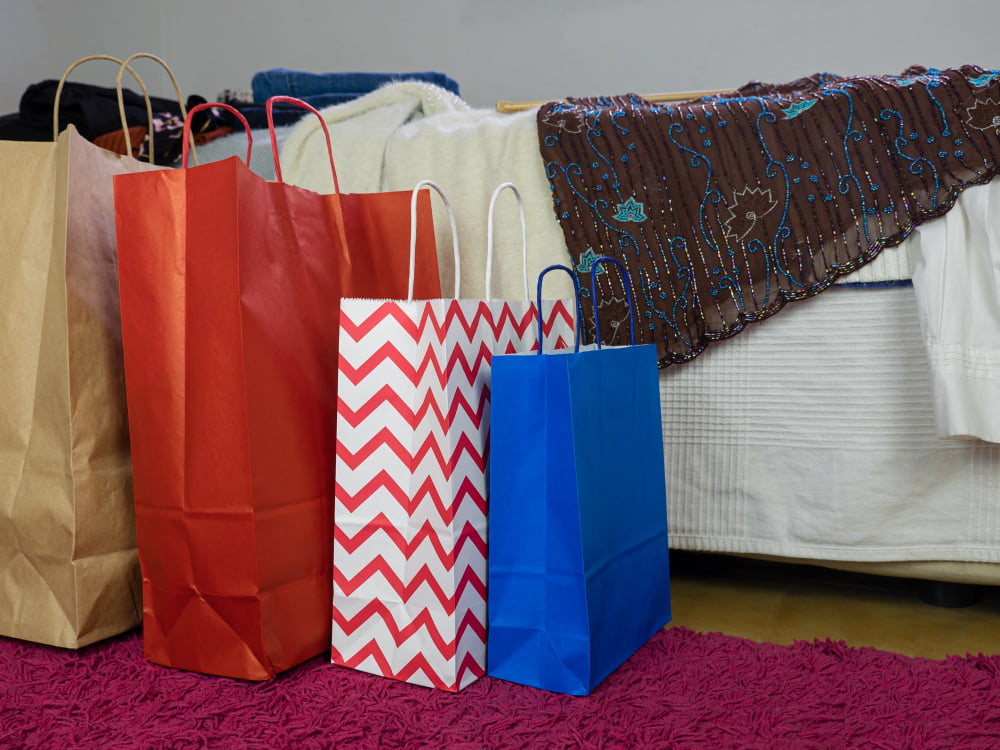
Shopping bag clutter typically occurs when bags are hoarded instead of discarded or recycled after use. It’s quite common to amass a collection in the kitchen, car trunk, or coat closet.
A common misunderstanding is the belief that these items could be useful someday. However, the vast majority often remain unused, taking up valuable space.
The key to resolving this issue is recognizing it as a form of clutter, which, like any other, warrants systematic organization and management.
It’s part of larger domestic organization issues and can be managed effectively by adopting a structured and systematic approach.
Reasons for Accumulating Shopping Bags

Collecting an excess of shopping bags often happens subconsciously. This happens when they’re seen as potentially useful items, resulting in a ‘save it for later‘ mentality.
Additionally, sometimes one may forget to carry reusable bags to the store and end up accumulating more plastic or paper bags.
Emotional attachments to certain bags, especially those from high-end stores or gift bags, can also drive accumulation.
Lastl
y, inadequate disposal options or uncertainty of recycling rules can discourage correct bag disposal, further adding to the clutter.
Why Decluttering Bags Is Important

Bags, although practical, can quickly become a nuisance when accumulated en masse.
When not managed, they consume coveted storage space and contribute to a visually chaotic environment.
This clutter can lead to unnecessary stress and anxiety, hindering productivity.
Furthermore, a surplus of bags signifies wasted resources, particularly in the case of single-use plastics which are detrimental to the environment.
By decluttering, you not only create an organized, stress-free zone but also contribute to a sustainable and eco-friendly lifestyle.
How to Declutter Shopping Bags
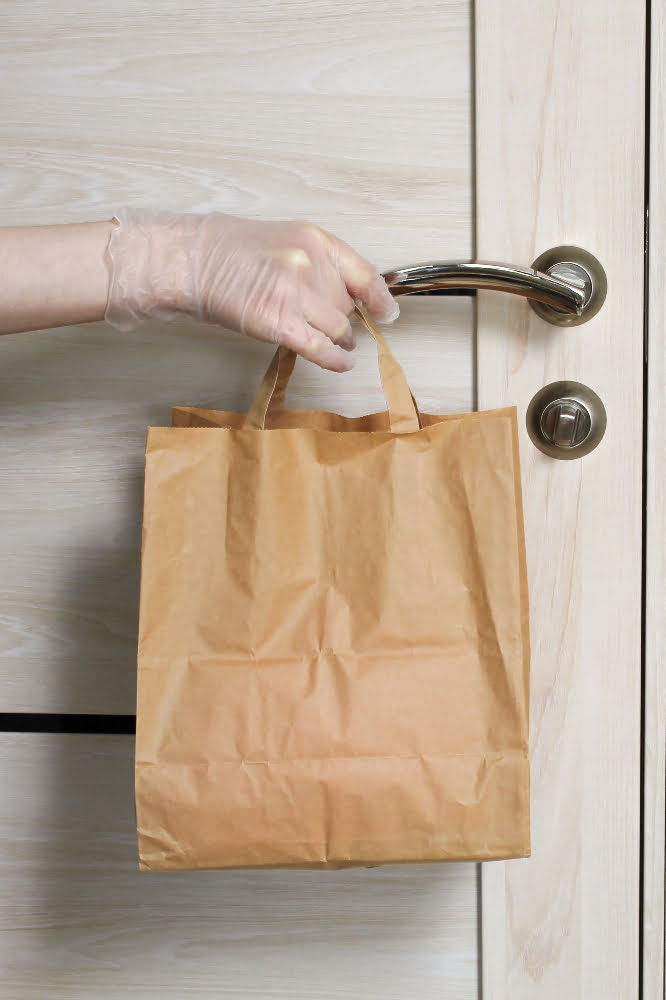
Start by separating the bags into categories: plastic, paper, and reusable. Once sorted, evaluate each pile. Consider the overall condition of each bag. If it’s damaged or too worn out, dispose of it responsibly.
Many supermarkets offer recycling bins for plastic bags. Paper bags can often go in with regular domestic recycling.
To handle the remaining items, apply the “one in, one out” rule. Each time a bag enters the home, make sure one leaves. This method aids in maintaining an equilibrium and avoiding future clutter.
Reusable bags are typically the best to keep due to their durability and environmental benefits.
In order to avoid unnecessary accumulation, limit the collection to a specific number. A good rule of thumb is to maintain a stash of no more than 10-15 shopping bags. It’s also worth noting that bag organization is key to effective decluttering. Having a designated spot for bag storage can keep them readily available and avoid them becoming clutter.
By following these efficient decluttering strategies, it’s possible to cultivate a more organized and less cluttered space at home.
Decide What to Keep and What to Discard

Begin by evaluating your collection thoroughly. Identify the bags in good, reusable condition and set them aside.
Discard or recycle any that are ripped, stained, or otherwise damaged beyond repair.
Keep a reasonable number of each type – plastic, paper, fabric – according to your storage space and regular needs.
A good rule of thumb is to keep no more than 10-15 of each type.
Remember the goal here isn’t to eliminate bags completely, but to maintain a manageable amount that you can use regularly instead of hoarding.
Organizing and Storing Shopping Bags Efficiently
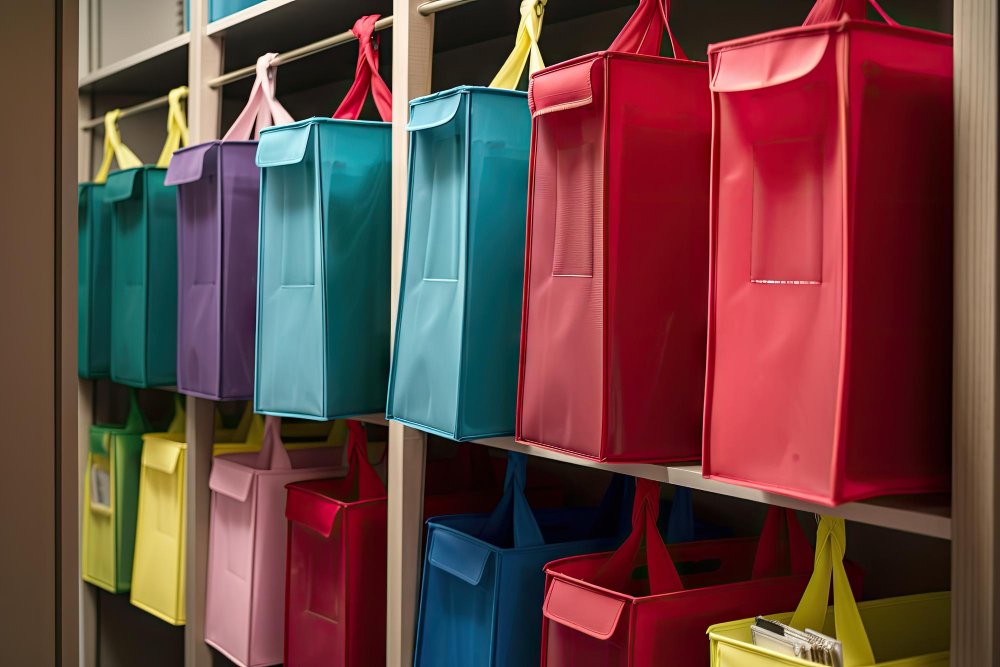
Begin the process by categorizing your bags. Separate them by material—plastic, paper, or fabric—and size. Smaller bags can be nested inside larger ones of the same type.
Consider stashing a few in convenient places like your car, desk, or backpack for on-the-go use.
For storing at home, use a designated drawer or closet space. Fabric bags can be folded neatly or rolled to minimize wrinkles. Plastic bags should be compacted into a manageable size for better space utilization.
A nifty trick for paper bags: flatten and align them for optimal neatness.
Another approach is to use tools such as bag holders—you can find affordable ones online. Lastly, setting a limit to the number you store helps keep bag clutter under control and prevents a future need for decluttering.
Maximizing Reusable Shopping Bags
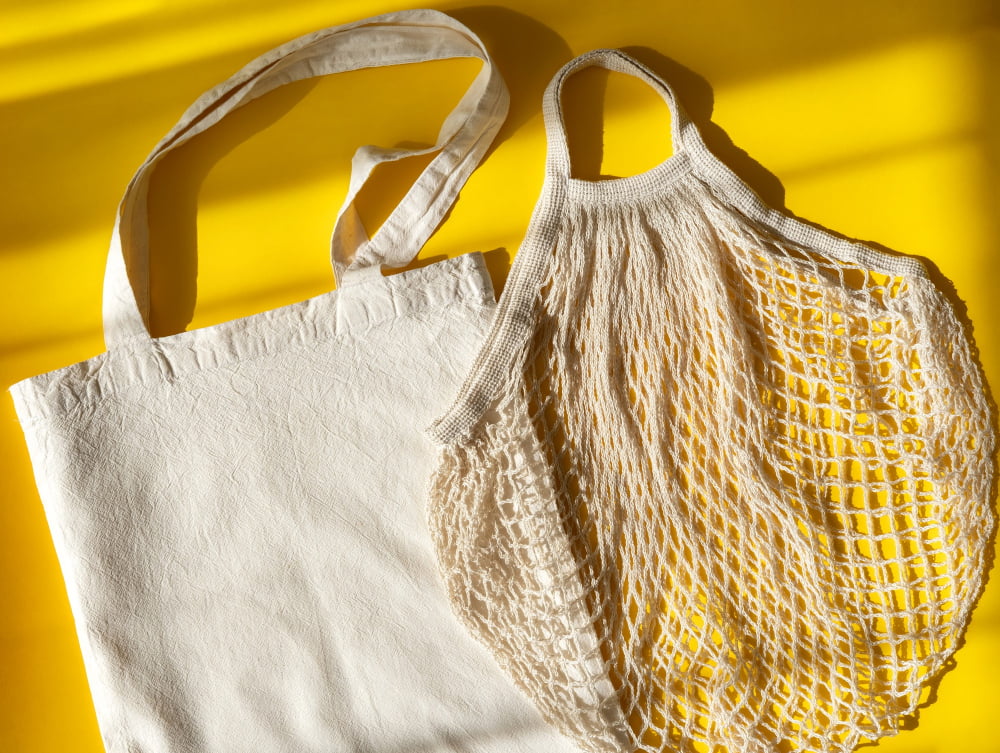
Reusable bags are the real heroes in our battle against bag clutter. There’s a surprising variety of ways they can be put to use beyond the grocery store. Use them for gym gear, office lunches, or even as an impromptu picnic basket.
Their durability makes them great for storing seasonal items, like holiday decorations or beach gear. Have a stock of different sizes and types for different purposes. Treat them as an extension of your home’s storage system, their compact size and portability make them super versatile.
Remember to put them back in their designated spot after each use to keep your home tidy and bags easily accessible for next time.
The goal is to ensure you’re using your reusable bags to their fullest potential while also reducing the reliance on single-use bags which can contribute significantly to clutter. Every opportunity to use a reusable bag not only aids in the organization but also helps the environment.
You’ll find that once your habit of using and returning them is established, your inventory of surplus bags will start to decrease.
How to Clean Reusable Shopping Bags
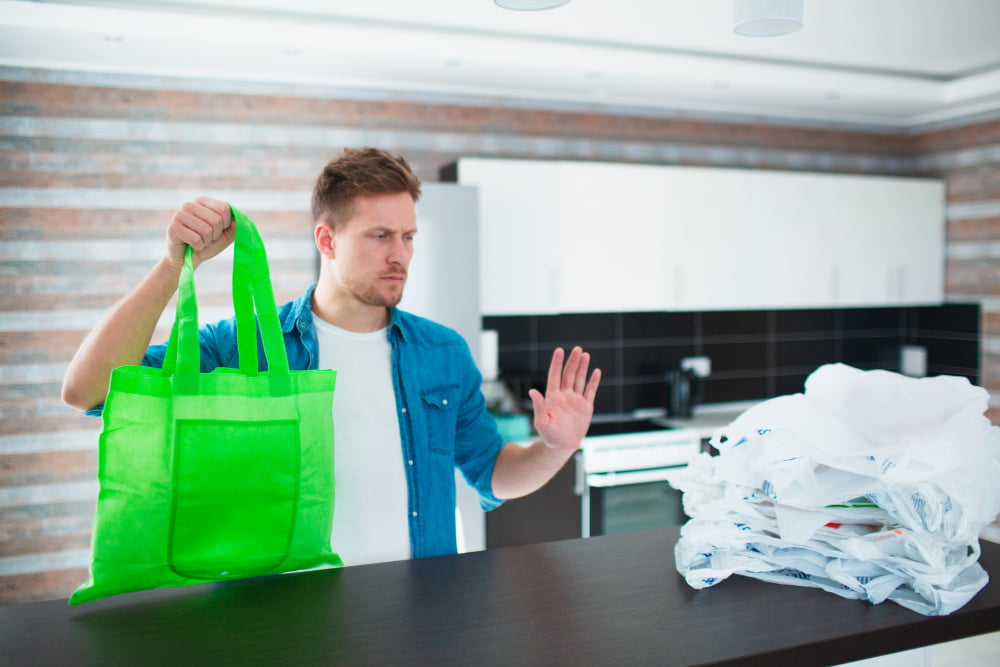
Proper cleaning of reusable bags is a crucial aspect that ensures their longevity. Different types of bags require different care. For canvas and cloth bags, a simple run in the washing machine will suffice, although air-drying is advised to save energy and prevent shrinkage.
Bags made from plastic materials, on the other hand, can be scrubbed using warm, soapy water and then thoroughly rinsed. It’s important to let all bags fully dry before storing them to prevent the growth of mold and mildew. Furthermore, to avoid any cross-contamination, assign separate bags for food and non-food items and clean them accordingly.
By maintaining clean reusable bags, you can chuck the clutter and promote a more sustainable lifestyle.
Alternative Options To Plastic Shopping Bags
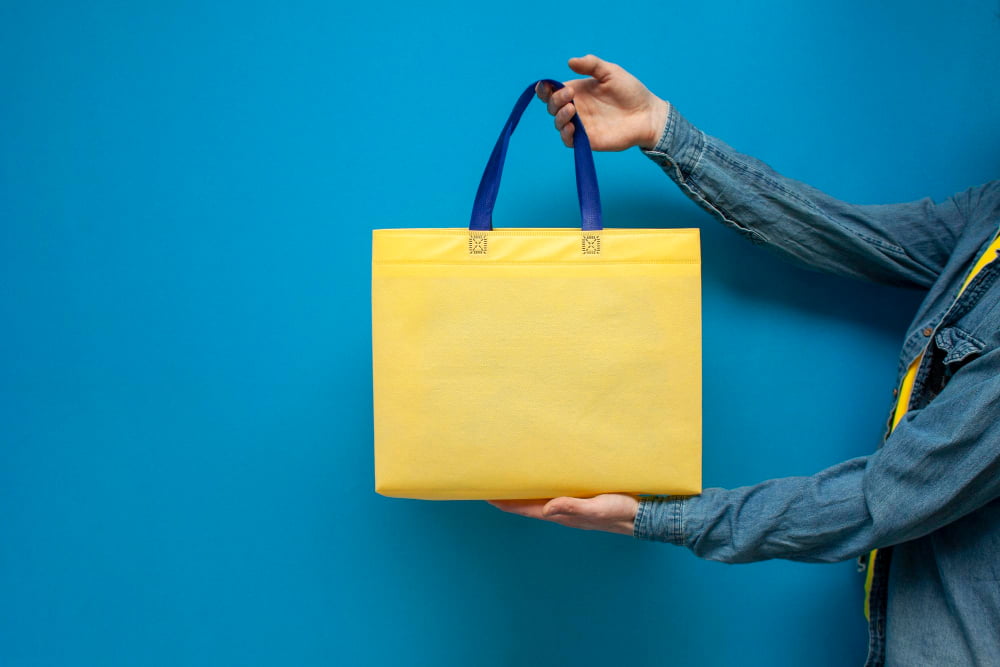
To reduce reliance on single-use plastic, consider eco-friendly alternatives.
Cotton totes are a popular choice, boasting durability, large carrying capacity, and machine-washable convenience.
Mesh produce bags are excellent for holding fruits and vegetables, eliminating the need for small plastic produce bags.
Jute and burlap bags are also sustainable choices, offering robustness for heavier items.
For those looking for a compact solution, foldable bags that fit in your purse or pocket are available.
Incorporating these alternatives can significantly cut down your accumulation of plastic shopping bags, concurrently contributing to environmental sustainability.
Environmental Impact of Shopping Bag Waste
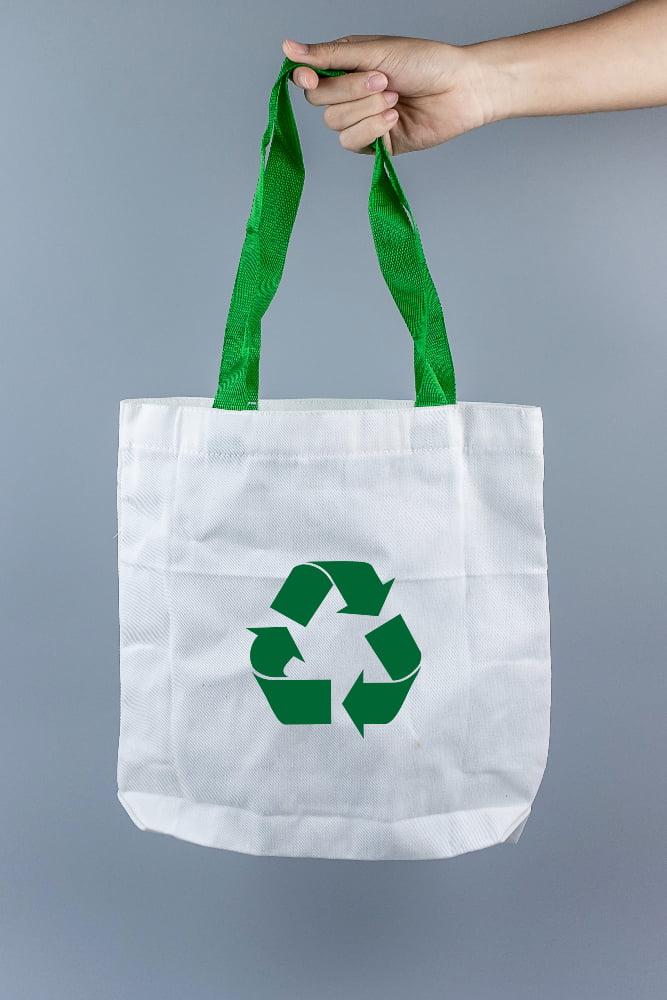
Plastic bags contribute significantly to environmental pollution, taking between 500 and 1,000 years to decompose in landfills. Moreover, they pose a risk to marine life when they end up in bodies of water.
Paper bags, while biodegradable, also have an environmental cost in terms of deforestation and the energy consumed during production.
Even reusable bags have a footprint – it means over exploitation of natural resources to make cotton bags and energy-intensive production for synthetic fabric bags. However, their longevity and potential for multiple uses make them a more sustainable choice.
A focused approach to bag management, including decluttering and thoughtful reuse, minimizes unnecessary waste, helping to mitigate these impacts.
Success Stories: Overcoming Shopping Bag Clutter

One individual was able to transform an overflowing cupboard of multi-colored plastic, paper, and fabric shopping bags into an organized, functional system. Facing an unruly mass of bags, they started by removing every bag from the cupboard, sorting them by type, and assessing each one’s condition.
Damaged or overly worn bags were responsibly recycled, leading to an immediate reduction in total bag count.
Taking inspiration from a folding technique learned from a Japanese decluttering show, the individual began folding the remaining bags into neat, small packages. Each type was then placed in a separate, dedicated storage container: plastic bags in an old cereal box, paper bags in a drawer, and fabric bags proudly displayed on hooks.
Another approach was adopted by a young couple who decided to tackle their shopping bag clutter head-on. They challenged themselves to a month-long “bag diet”, using only the reusable bags they already owned. Careful meal planning and shopping helped them stick to this challenge.
At the end of the month, they found their hoard of plastic bags drastically reduced, and their surplus of reusable bags fully utilized.
These examples demonstrate how decluttering shopping bags not only maximizes space but also instills a sense of control and satisfaction, helping individuals maintain an organized lifestyle efficiently.
FAQ
How do you declutter a shopping bag?
To declutter a shopping bag, store all bags in one large bag, hang it near the door or in the car’s trunk, or alternatively fold or roll them to keep them in a basket, purse or pocket for convenient usage.
How do you declutter a tote bag?
Declutter a tote bag by emptying its content, thoroughly cleaning it while ensuring all pockets are empty, sorting items into categories, putting similar items in a single pouch, and discarding unnecessary items or trash.
What are the best methods to organize shopping bags in small spaces?
The best methods to organize shopping bags in small spaces include hanging them on wall hooks, storing them in an over-the-door rack, or compactly folding them into a designated drawer or box.
How can one repurpose shopping bags for effective storage solutions?
Shopping bags can be repurposed for effective storage solutions by using them to organize items in pantry, hold loose items in car, segregate dirty clothes while traveling, or store items like craft supplies, rags, or plastic bags.
What are the sustainable ways to dispose of or recycle unwanted shopping bags?
Sustainable ways to dispose of or recycle unwanted shopping bags include reusing them for different purposes, donating to local grocers or schools, sending back to retailers through take-back programs, or recycling them at designated facilities.




